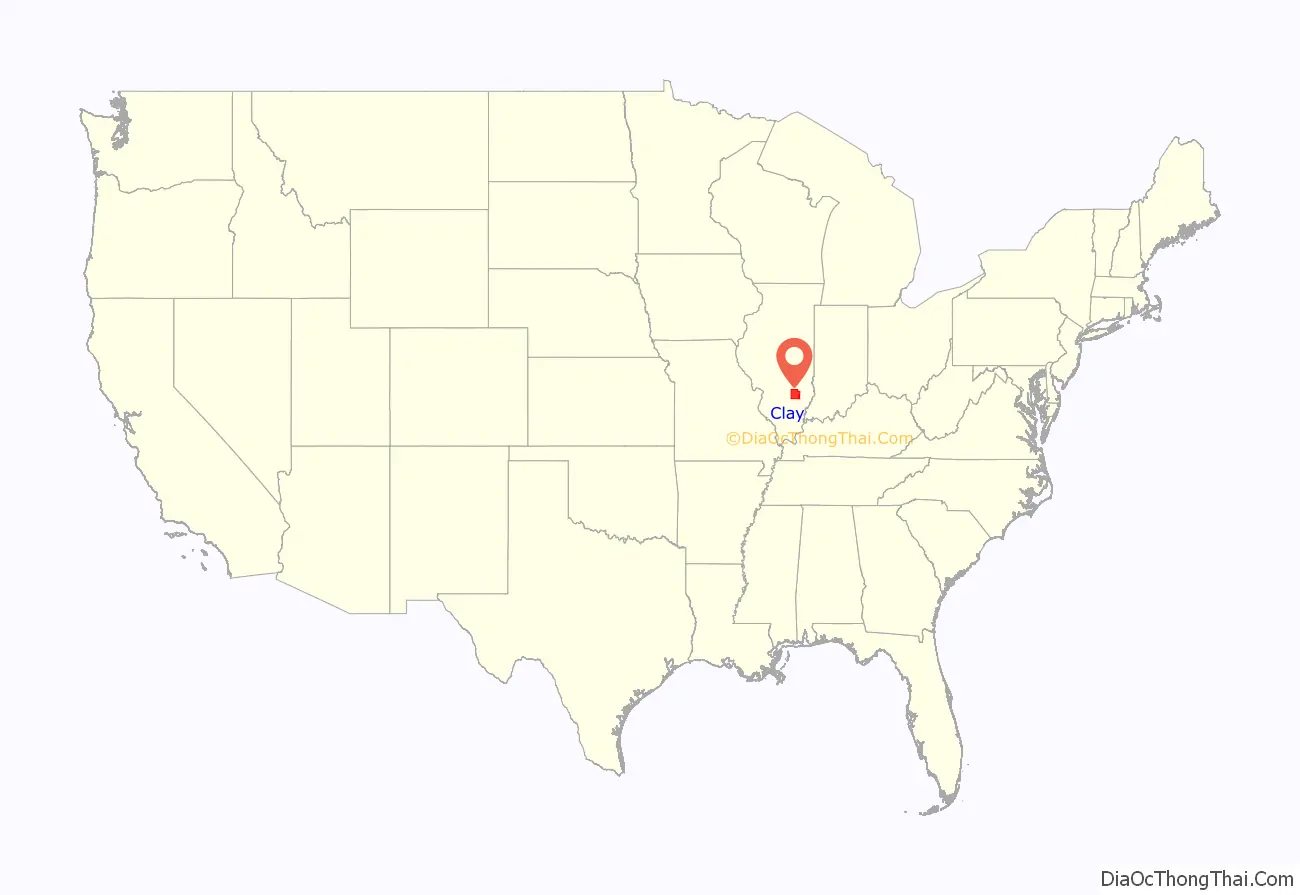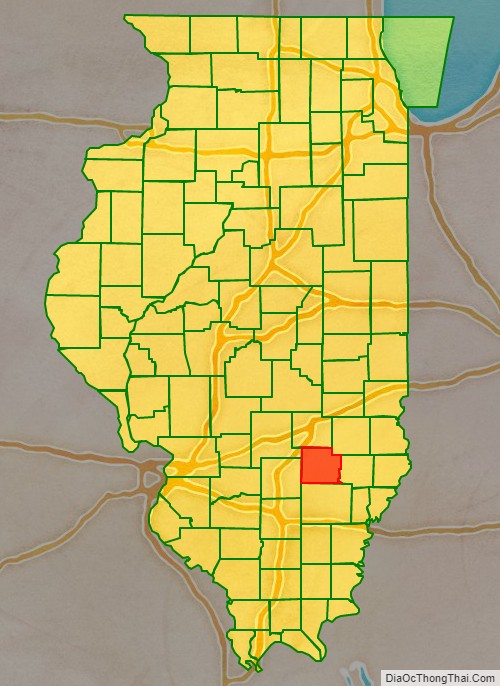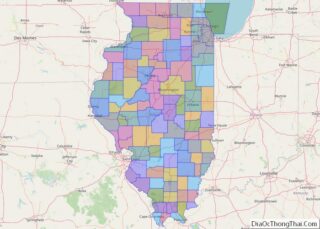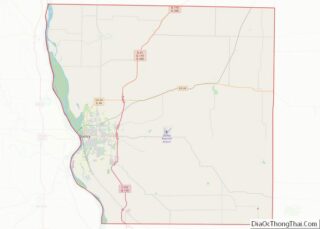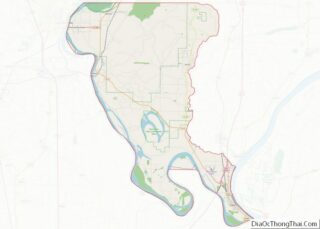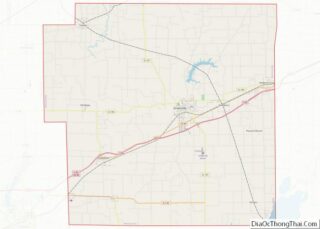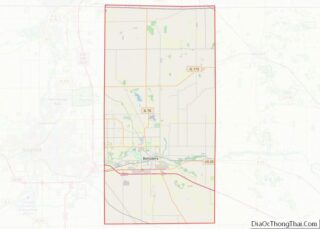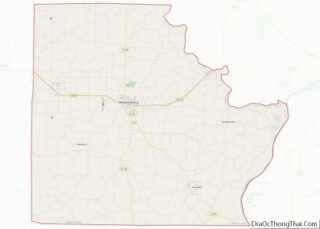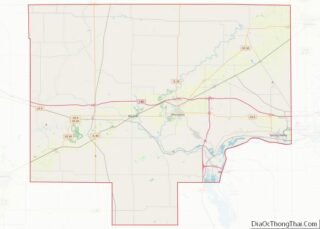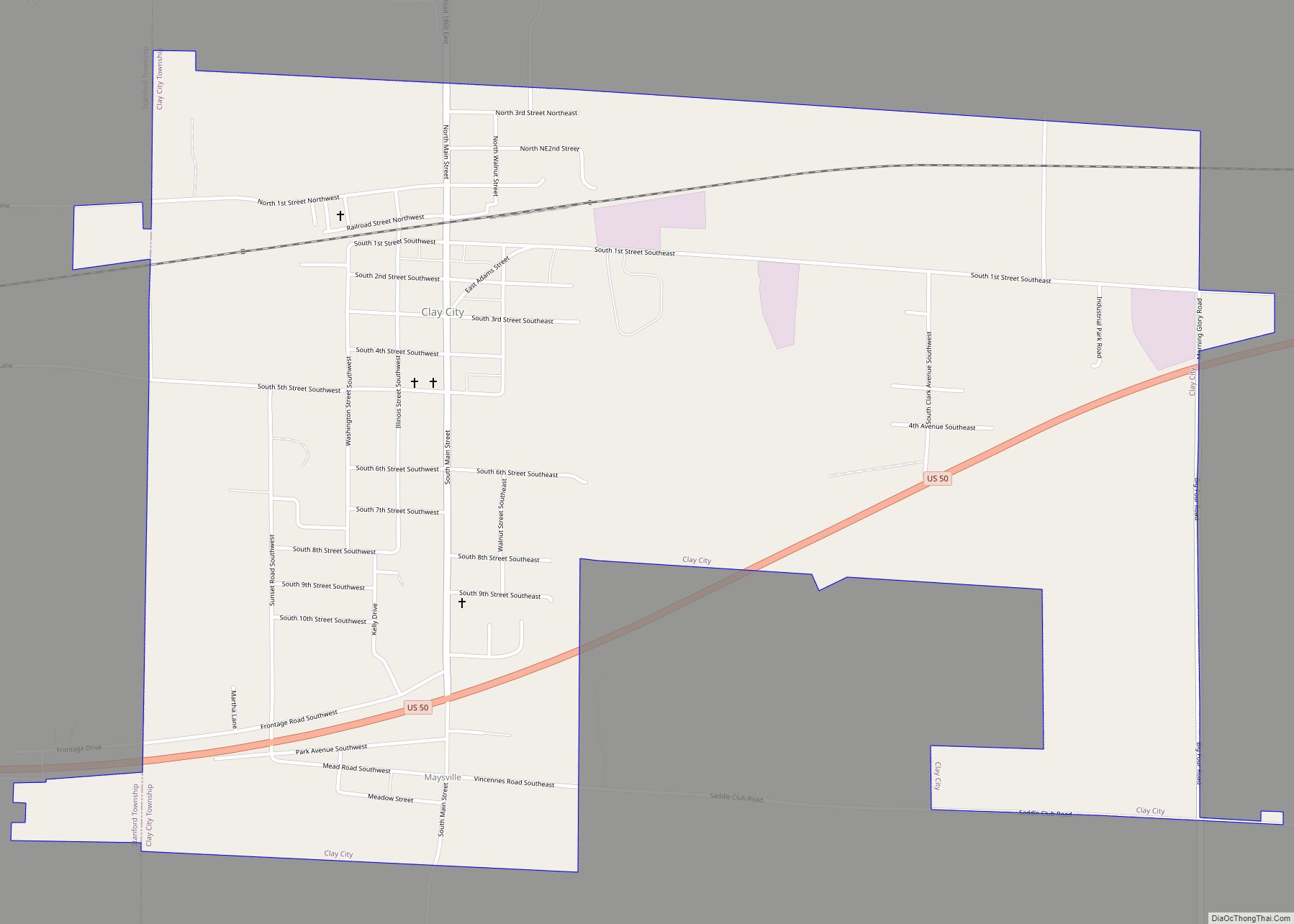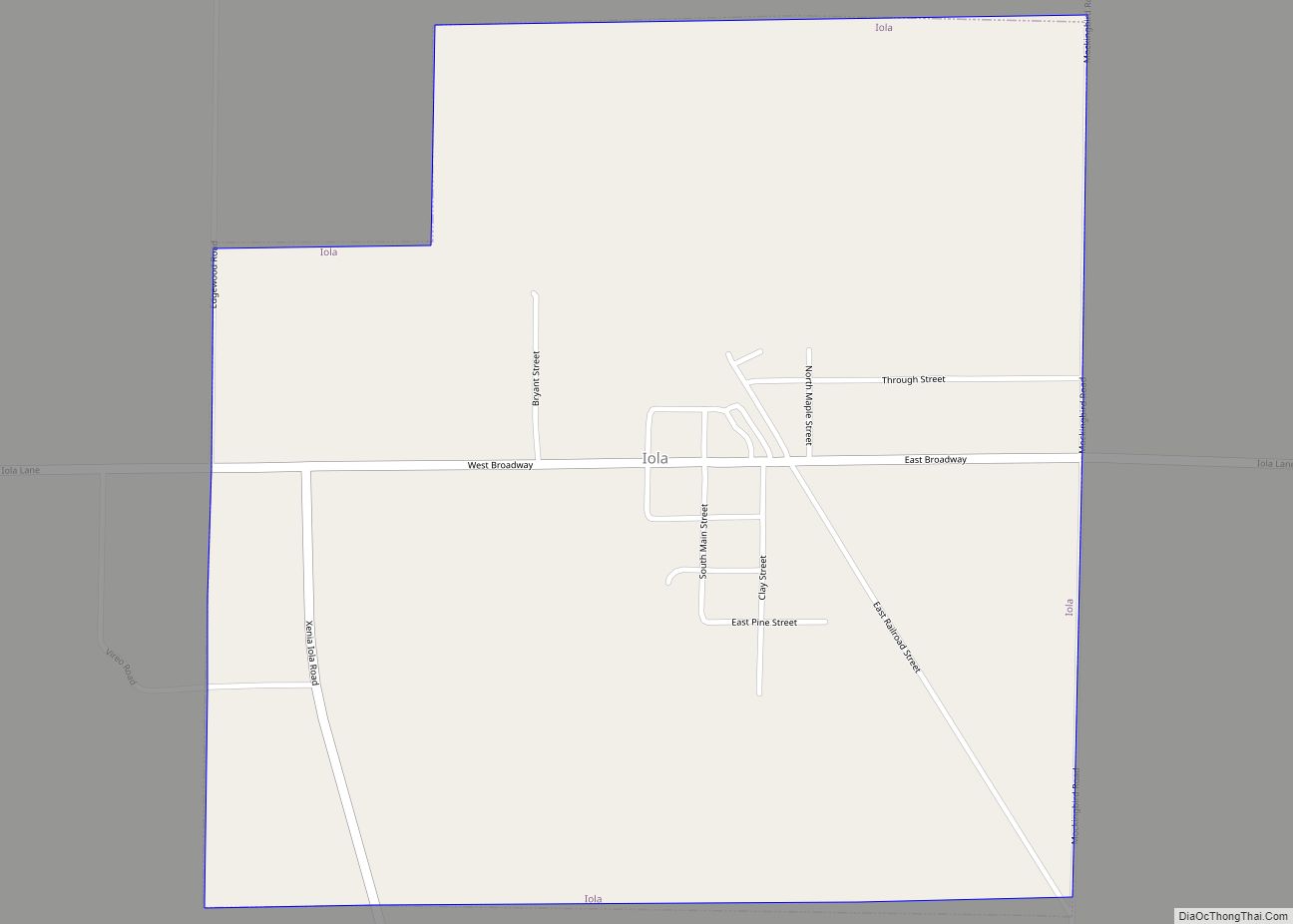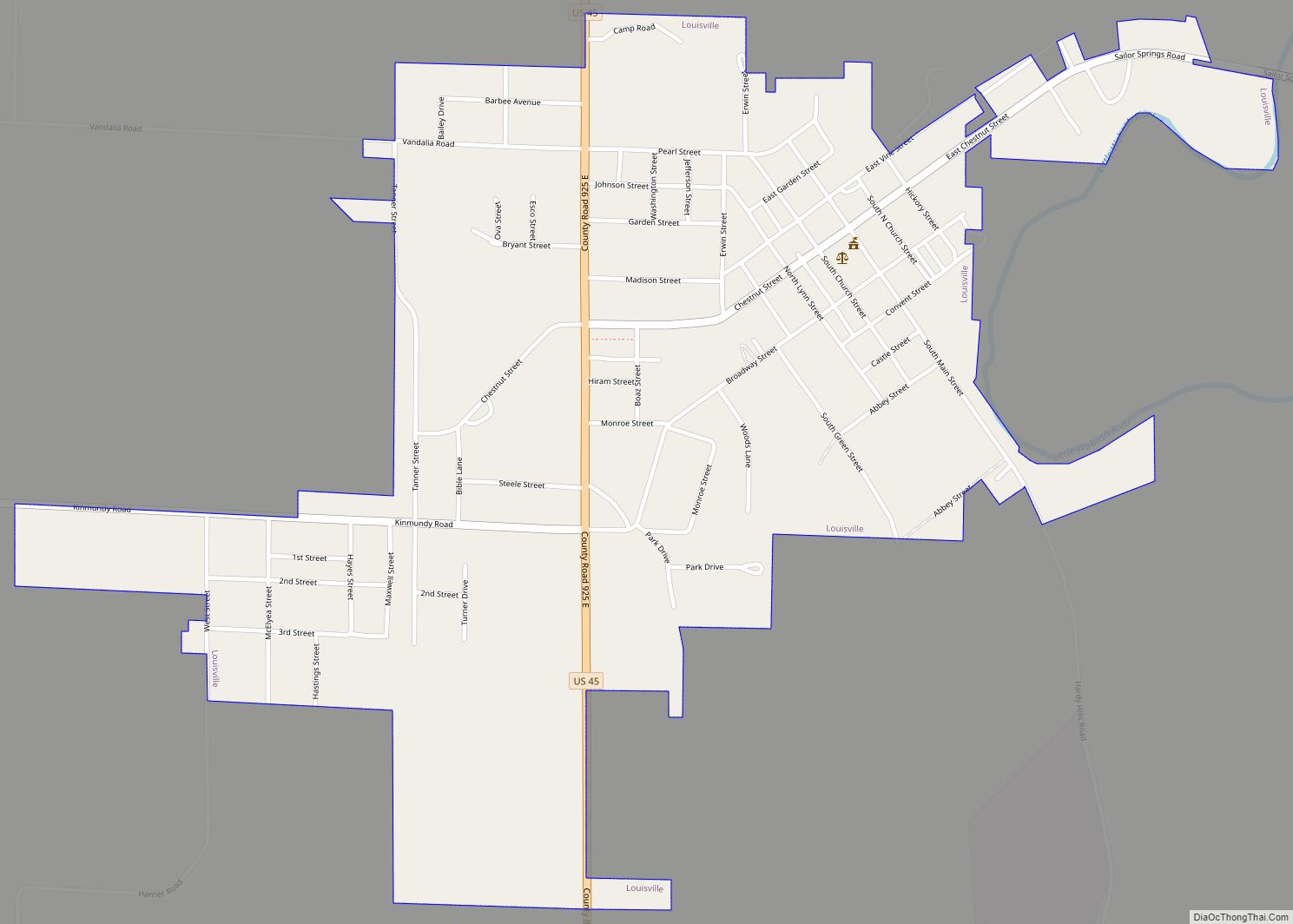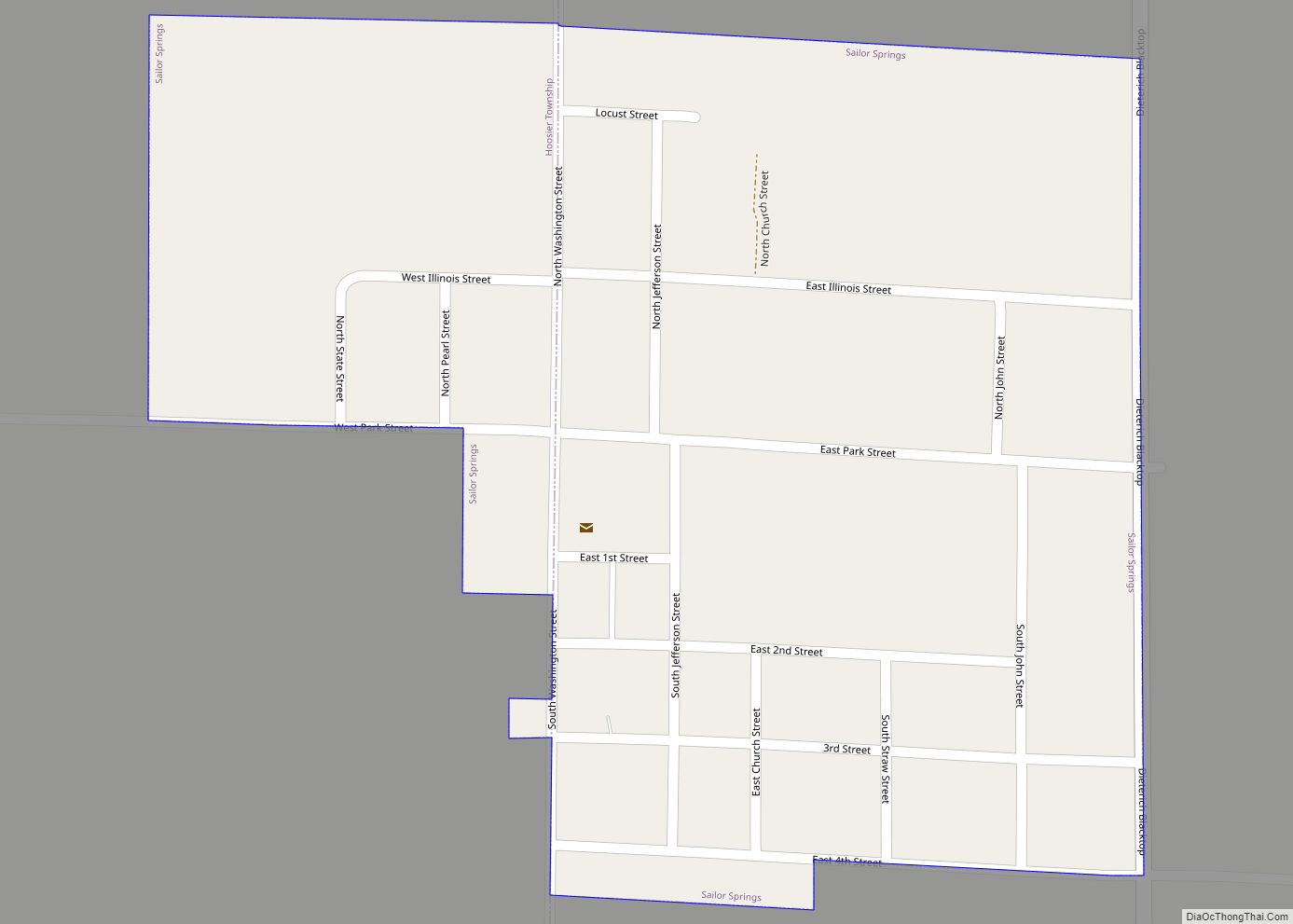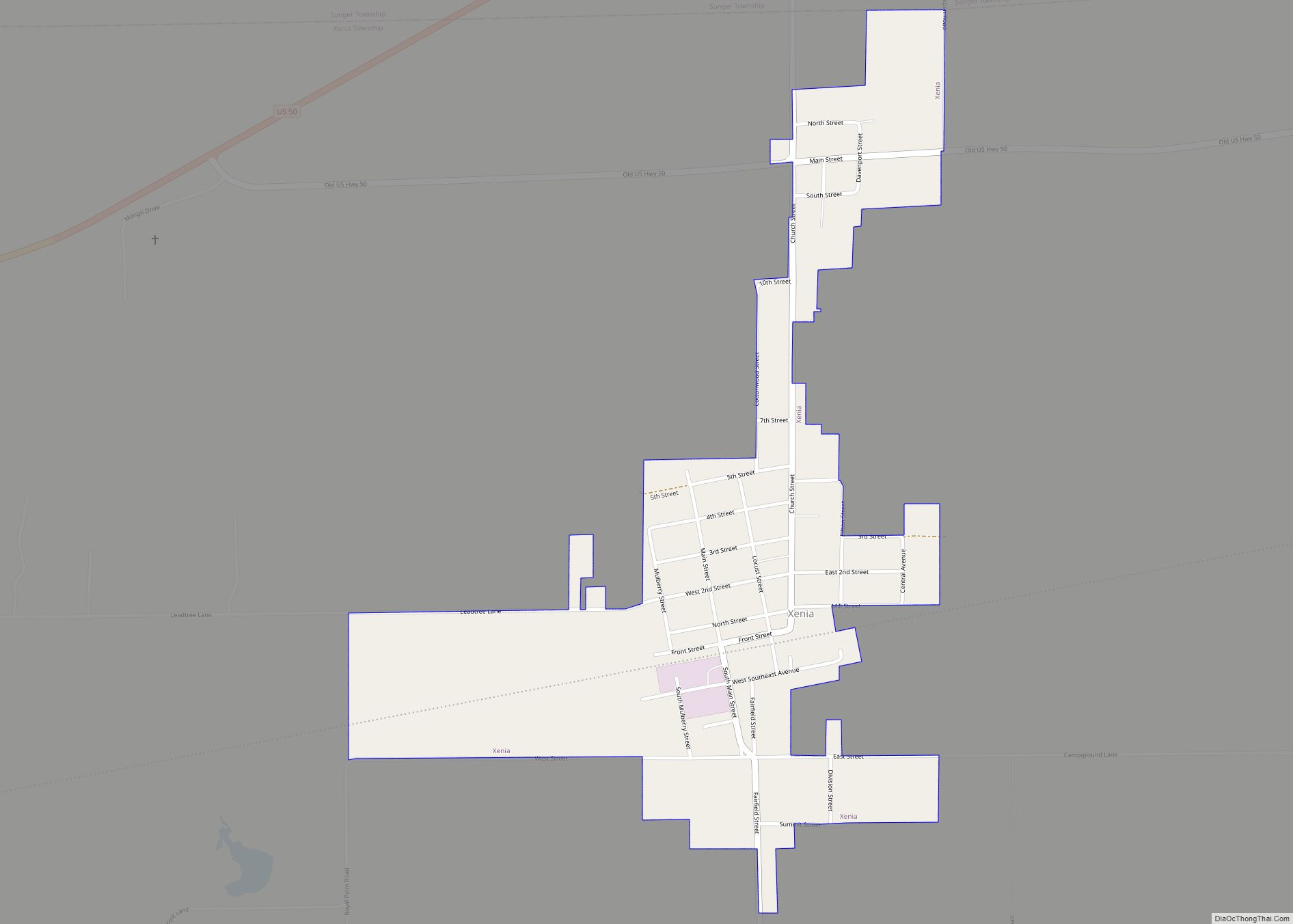Clay County is a county in the U.S. state of Illinois. As of the 2010 United States Census, the population was 13,815. Since 1842, its county seat has been Louisville, in the center of the county’s area.
In 1950, the U.S. Census Bureau placed the mean center of U.S. population in Clay County.
| Name: | Clay County |
|---|---|
| FIPS code: | 17-025 |
| State: | Illinois |
| Founded: | 1824 |
| Named for: | Henry Clay |
| Seat: | Louisville |
| Largest city: | Flora |
| Total Area: | 469.59 sq mi (1,216.2 km²) |
| Land Area: | 468.32 sq mi (1,212.9 km²) |
| Total Population: | 13,815 |
| Population Density: | 28.3/sq mi (10.9/km²) |
| Time zone: | UTC−6 (Central) |
| Summer Time Zone (DST): | UTC−5 (CDT) |
| Website: | claycountyillinois.org |
Clay County location map. Where is Clay County?
History
The future Clay County had been inhabited for thousands of years by the Illiniwek Indians (the remains of an Indian village’s burial ground are still visible west of Ingraham). White explorers used or cleared a trail between the future settlements of Saint Louis in Missouri, to Vincennes in Indiana; this became a mail route in 1805. The first white settler (McCauley, from Kentucky) built a cabin in 1809 near this road at its intersection with a trail from Vandalia to Mt. Carmel. He was driven out by the Indians, but had returned by 1819, by which time other cabins had been constructed in the area, which was originally called Habbardsville. The Indians were removed from the area in 1828.
Clay County was authorized by act of the state legislature on 23 December 1824, by partitioning portions of Wayne, Crawford, and Fayette counties. It was named for American statesman Henry Clay, a member of the United States Senate from Kentucky and United States Secretary of State. Clay was a candidate for president in 1824.
The first appointed commissioners met on 8 March 1825 to organize the county government. Land for county building purposes was donated near Habbardsville. The commissioners accepted the offer, renamed it Maysville, and had a two-room courthouse erected on the property by the end of the year. The seat remained at that location (about a mile south of the present community of Clay City) through 1841, and in 1842 the county government began functioning in Louisville, being at the center of the county’s area.
The first railroad line through Clay County was laid between 1850 and 1854, the Ohio and Mississippi Line. By 1855–56, the Illinois Central Railroad had also been constructed across the northwest corner of the county.
Clay County Road Map
Geography
Clay County from the time of its creation to 1831
Clay County between 1831 and 1841
Clay County was reduced to its current size in 1841 by the creation of Richland County.
The low rolling hills of Clay County are devoted to agricultural production. The various drainage areas are still largely wooded. The Little Wabash River flows southeastward through the center of the county, while Muddy Creek drains the eastern portion (the meanders of Little Muddy delineate a portion of the county’s east border with Richland County). Buck Creek, in the south part of the county, flows eastward and joins the Little Wabash above Clay City. Raccoon Creek flows southeastward from the lower part of the county into Wayne County. The highest point on the terrain (646 feet/197 meters ASL) is a small point along the western border with Marion County.
The county produced excellent timber during the nineteenth century, and some sandstone and limestone. The soil is light and not considered adapted to farming on a large scale.
According to the U.S. Census Bureau, the county has a total area of 470 square miles (1,200 km), of which 468 square miles (1,210 km) is land and 1.3 square miles (3.4 km) (0.3%) is water.
Adjacent counties
- Effingham County – north
- Jasper County – northeast
- Richland County – east
- Wayne County – south
- Marion County – west
- Fayette County – northwest
Major highways
- I-57
- US 45
- US 50
- IL 37
Protected areas
- Martin T Snyder Memorial Nature Preserve
Cities
Villages
- Clay City
- Iola
- Louisville (seat)
- Sailor Springs
- Xenia
Unincorporated communities
- Bible Grove
- Camp Travis
- Cruse
- Greendale
- Hoosier
- Hord
- Ingraham
- Kenner
- Oskaloosa
- Riffle
- Wendelin
Townships
- Bible Grove
- Blair
- Clay City
- Harter
- Hoosier
- Larkinsburg
- Louisville
- Oskaloosa
- Pixley
- Songer
- Stanford
- Xenia
